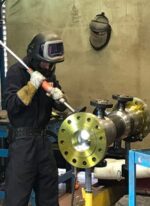Engineering innovators join forces to bid for major nuclear projects
An engineering business with a global reputation for manufacturing innovative measurement products for a range of industries around the world is expanding its services in the nuclear sector. McMenon Engineering Services manufactures flow and temperature measurement instrumentation for customers in more than 60 countries, including China and the Far East, North and South America, Europe, India, the Middle East, South Africa and Australia. McMenon, which acquired its Workington-based engineering and manufacturing business from global power and automation technology group ABB, successfully operates across a diverse range of industries with major success including in energy, water, renewables and process industries. McMenon, based in the UK at a 10,000-square-metre site at Workington, Cumbria, is applying its skills and experience to increase its footprint in the nuclear industry. The pioneering company, which has been heralded for its dynamic leadership in exports, is also looking to do more business in its home North-West region, including for Sellafield in Cumbria. To achieve its expansion ambitions McMenon, which was recently praised in the House of Commons by Workington MP Mark Jenkinson, has announced it has formed a collaborative partnership with fellow SME TIS Cumbria Ltd which itself has 25 years of experience in the nuclear sector. Together McMenon and TIS will have the scale, capacity and capability to compete for, and deliver, multi-million pound projects in the UK nuclear sector. Anand Puthran, CEO of McMenon, said: “For McMenon to expand in the nuclear industry sector is an exciting next stage of our growth plans. “We have a 73-year heritage of engineering and manufacturing with exports to more than 60 countries around the world. “McMenon also invests substantially in developing the local supply chain and TIS has been a trusted supply partner for the business. It feels natural to extend the existing relationship towards jointly handling larger […]











